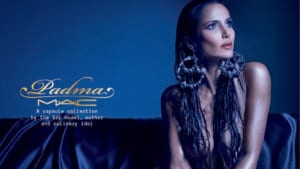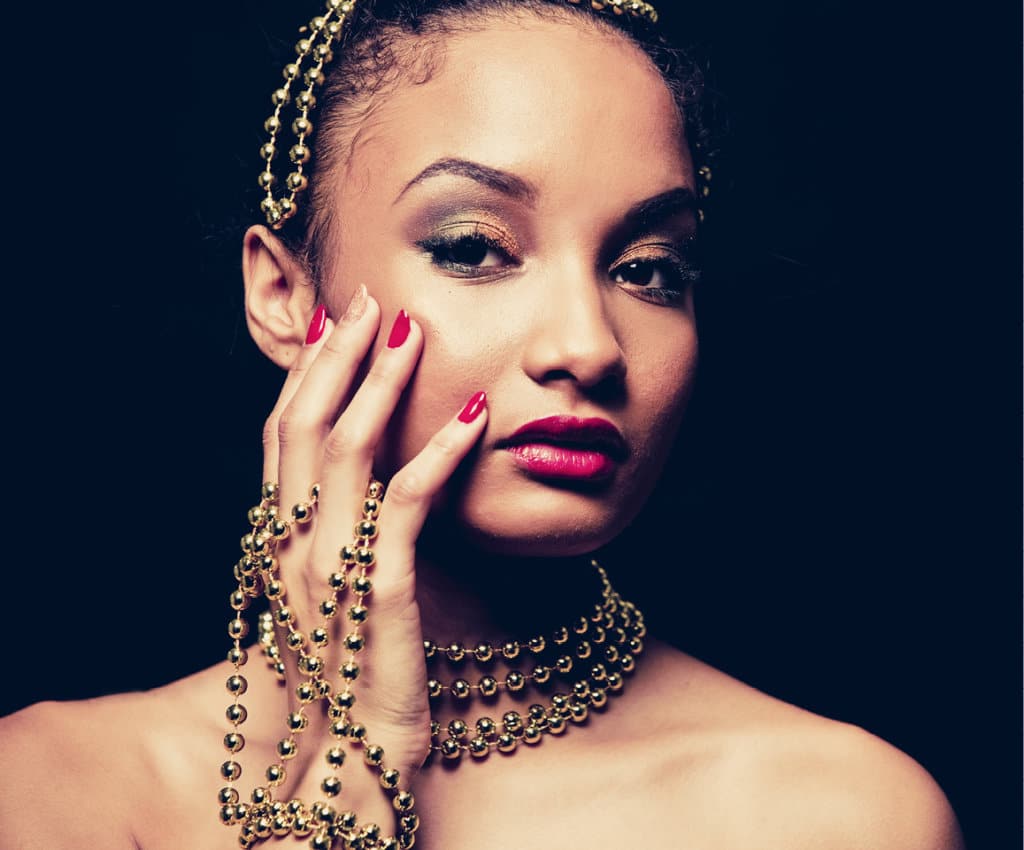When author, model and Top Chef judge Padma Lakshmi announced a new capsule line of makeup that she curated with beauty giant MAC, there was bound to be interest among the South Asian girls. Many look up to her for her direct references to her ethnicity, even as she climbed the charts in a predominantly white dominated entertainment world.
The dusky beauty from South India, in an ode to her roots, came up with shades named as Mittai Pink, Kerala Sun, Sumac and Indian Ink.
But more importantly, her warm toned blushes and caramel lipsticks, which suitably complement the dusky brown Indian skin, much like her own. The collection was 12 dozen years in the making, according to Lakshmi. She pointed out that even though there are more browns than Caucasians in the world, most makeup caters to lighter skin tones. Lakshmi said she created this collection for women like her, who struggled to find shades that were flattering for their skin tones.
So, does Lakshmi’s quest for the right shade, raise a bigger question about inequality in the beauty business? Why have brown skin tones, the more common skin tone globally, been neglected by the beauty industry.
The recent backlash against IT Cosmetics earlier this year drives home the problem. The company in its Bye Bye range of foundations created only light shades. When the brand revealed its latest range of colors on social media, critics blasted the company for developing only three dark shades. For many cosmetic brands, inclusivity means only creating lighter or dark shades with precious little in between to cater to a range of skin colors.
Perhaps for the longest time, until Priyanka Chopra appeared on American TV, flouncing her dark, long locks for the Pantene commercial, few viewers even wondered what make-up would look good on a brown skin tone. But we need to look inwards too, where enough damage to the dusky, Indian skin has already been done.

Padma MAC Collection
Most Indian mega stars, including Chopra herself, are guilty of endorsing fairness products back home. Chopra recently, expressed regret for the endorsement in an interview to Cosmopolitan magazine:
“I was made to feel very self-conscious when I was younger because I’m darker-toned, and that was a huge part of my self-esteem issue when I was growing up. So, I did this cream commercial and when I saw it, it made me feel like crap. It reminded me of what I felt like when I was a little girl. I was like, ‘Oh my god, this is what I felt like. Like what I have is not good enough.”
While it may have taken Chopra many years of success, confidence and an entry in Hollywood to admit to her folly, the fact that even today a large chunk of brown-skinned South Asians aspire to fit the ideal of light-skinned beauty is one reason the beauty industry may not have taken note.
The Change Within
When the Karan Johar brand of Bollywood began shaping the “new” India in the early 1990s, it brought along with it screaming designer logos and impeccable looking heroines. While the focus on the rich India in movies has been criticized, it did push the envelope for Indians in the international market. The designer dressed heroines, who could don a mini-skirt with as much ease as a bindi found a quick resonance with overseas Indian girls.
But the coming of age of an Indian girl in a Prada and Valentino, in a subtle way, also called for global products that fit her need. A few companies were quick to realize this big beauty market and MAC, a cult Bollywood favorite, offers shades for warmer skin tones. It comes with products labelled as NC or NW for neutral cool or neutral warm undertones and boasts of shades designed for Asian skin tones.
In the past, Farah Naz, a British Asian woman, frustrated with the lack of choices in makeup for her skin tone, launched EX1 cosmetics. The affordable line of cosmetics, retailed in the UK, claims that 78 percent of British women are unhappy with their foundation. Naz, says, “I decided to move away from the typical oranges and pinks and instead created a blend of yellow, gold tones.”
Global Beauty Overhaul
The global revolution in the beauty world, which called for realistic ideals of beauty, also bolstered the cause for brown women. Lancome’s Teint Idole Ultra Wear Range caught global attention for its unique campaign on empowerment, featuring a range of women, including filmmaker Gurinder Chadha. It questioned the preset, conventional ideas of beauty. The brands aware of the global market as well as the growing skepticism have begun expanding their range.
When Tarte cosmetics found itself in the midst of a storm over its range of shades, it quickly announced plans to release 10 more shades, which, it claimed, were in the offing even before the backlash.
But so long as model and stars in India are busy promoting lightening creams, options for brown tones will be slow in coming.
